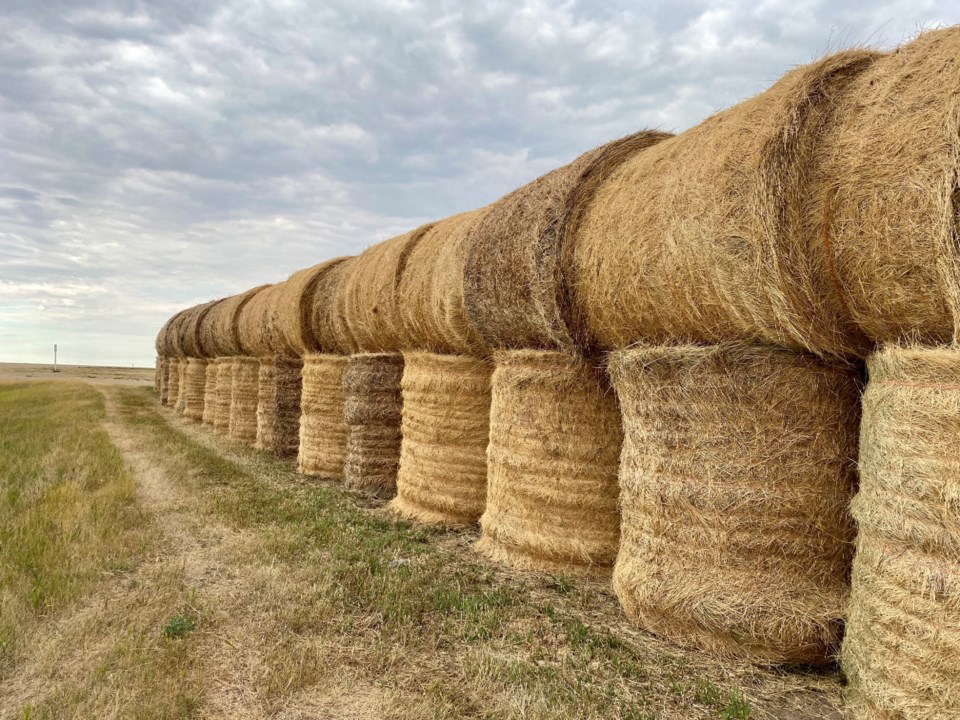UNITY — As producers continue to get harvest equipment ready, pulse crops are starting to be desiccated within the region. Harvest activity has started in some areas with more producers watching their fields and anticipating harvest starting shortly.
Within the region, producers have just started to harvest winter cereals, mustard, pulses and canary seed. Currently, 25 per cent of winter wheat has been harvested followed by eight per cent of fall rye. Six per cent of lentils and field peas are reported as harvested within the region. A full summary of individual crop harvest progress for all regions can be viewed in the attached harvest progress table.
Haying operations are progressing in the region with some producers wrapping up. No second cut is anticipated this year due to the lack of rainfall. Dryland alfalfa yields are estimated to be 1.92 tons per acre with greenfeed estimated at 2.42 tons per acre and tame hay estimated at 1.33 tons per acre. Irrigated alfalfa is estimated to be 1.75 tons per acre and irrigated greenfeed is estimated to be 2.25 tons per acre. Silage yields are estimated to be 5.71 tons per acre within the region.
Rain was variable across the region over the past week. The highest rainfall recorded fell in the Marengo area at 32 mm. The Neilburg area received 12 mm and the Macklin and Sonningdale areas received 10 mm. Although any moisture received would be too late for advanced crops, many producers within the region would welcome rain to help with grain fill and bushel weight on later seeded crops.
Topsoil moisture continues to decline with the persistent hot and dry conditions. Currently, cropland topsoil moisture is rated as 26 per cent adequate, 69 per cent short and five per cent very short. Hayland topsoil moisture is reported at 28 per cent adequate, 59 per cent short and 13 per cent very short. Pasture topsoil moisture is 26 per cent adequate, 60 per cent short and 14 per cent very short.
The main cause of crop damage throughout the region continues to be due heat and the lack of moisture. Wind and aphids caused up to moderate damage in some areas throughout the region. Grasshoppers and gophers accounted for minor damage over the past week. As canola continues to mature, producers are observing sclerotinia stem rot emerging in their fields.
For more information about West-Central Saskatchewan, explore the .




